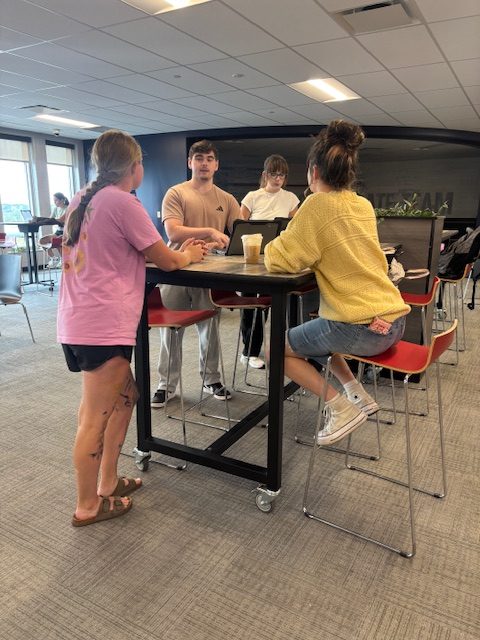Picture this. You’re in your first period Algebra 2 class, you’re still tired and groggy because
- It’s 7:30 in the morning and
- Math hurts your brain
And then all of a sudden, in a once quiet classroom, you hear someone yell “I FORGOT TO PACK MY HOT CHEETOS!”
While this might seem like an elaborate skit on Saturday Night live, in reality, this was a genuine moment that I experienced.
As silly and meaningless as it seems, the amount of times I’ve seen my classmates scarfing down a whole bag of Flamin’ Hot Cheetos at seven in the morning is surprisingly a lot. High schoolers, as well as America as a whole, loves their hot cheetos, but the true question to consider is whether the hot cheetos themselves are loved, or the addicting feeling that Red #40 and other artificial dyes provided?
Artificial food dyes do more than just make food look way more appetizing, but instead, they interact with the brain and digestive tract in ways that often creates an addicting feeling.
Research suggests that Red #40 and Yellow #5 can trigger the release of serotonin, a neurotransmitter associated with pleasure and reward. This response is similar to what happens when consuming sugar or even certain drugs, reinforcing cravings and encouraging repeated consumption.
The consumption of artificial food dyes has been a “flamin’ ” hot topic of debate for years. While the knowledge regarding food dyes has advanced greatly within the general American Public, The American Food and Drug Administration has still failed to recognize– or more scarily, care about– the intense and detrimental repercussions that come with the consumption of artificial food dyes.
The concern of artificial food dyes does not end with the Red #40 found within Hot Cheetos, but instead, extends into all of the eight dyes approved by America’s Food and Drug Administration.
As of March 5th, 2025, the West Virginia legislature became the first state in America to propose a bill, House Bill 2354, which will ban seven artificial food dyes and two preservatives, and now as of March 24th, W. Va. Governor Patrick Morrisey has officially signed this bill into law.
House Bill 2354 will take full effect beginning on two separate dates: August 1, 2025 where this bill will take effect specifically West Virginia school systems, and January 1st, 2027, where the ban will take effect within the entirety of West Virginia.
West Virginia’s Health Government Organization Chair, Laura Wakim Chapman, is was one of the proud voices on West Virginia’s senate floor to support the passing of this bill..
“I’m a mom of two small kids,” said Senator Chapman, “I have a seven and a nine year old, and you know, as a mother, their health is very important, and the fact that our foods do have these artificial dyes that are mostly petroleum based. Is terrifying.”
But petroleum isn’t the only concern. Senator Chapman continuously urges to shed light upon West Virginia’s alarming health statistics.
“We have some of the worst health outcomes in West Virginia. We are the most obese state, and we have the highest incidence of Type 2 diabetes,” said Chapman, “I think a large part of that is because many West Virginians live in food deserts and don’t have access to fresh fruits and vegetables.”
Despite criticism over the three-year implementation period, Senator Chapman believes the bill provides a necessary balance and adjustment.
“Nobody wants to be eating petroleum. The three-year span gives manufacturers time to change their ingredients. If new research comes to light about other harmful dyes or preservatives, I could see the legislature adding those to the bill in the future.”
Chapman acknowledges that some people believe three years is too long of a wait considering the extremely harmful repercussions associated with synthetic dyes. Though this wait may seem long and treacherous, for years, the FDA has failed to acknowledge the dangers of artificial dyes, which in return has created an endless cycle where companies prioritize profit over consumer health and wellbeing.
“If we know it’s poison, we should be banning it immediately. But businesses need time to adjust their formulas,” she explained. “Another argument is that food safety falls under the FDA’s jurisdiction. But clearly, if these harmful ingredients are still in our food, the FDA isn’t doing its job.”
While critics argue that reformulating food products could increase costs, Chapman states that stores like Aldi have already banned artificial dyes—and their dye-free alternatives are often a lot cheaper than their evil sister name-brand .
“Health is wealth. We need to ensure that what we’re ingesting isn’t killing us. This bill is just common sense.”


























